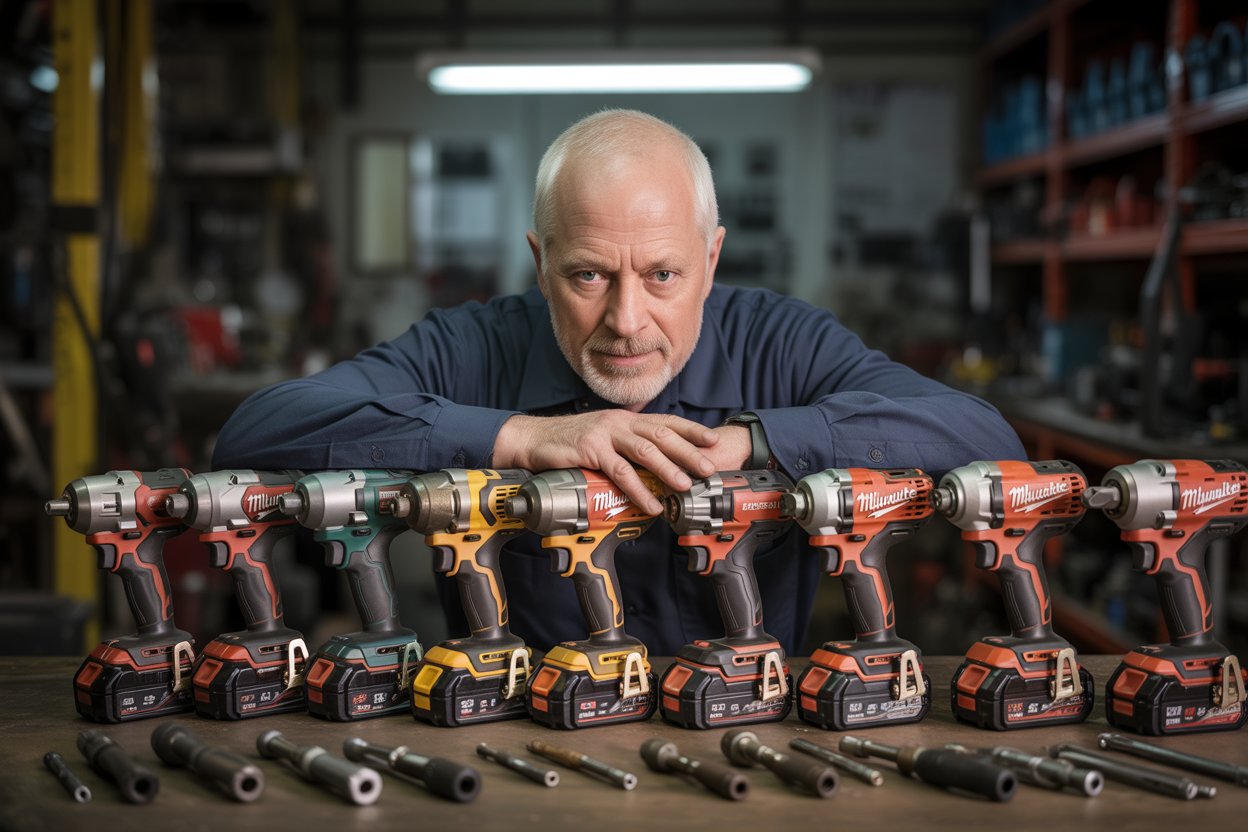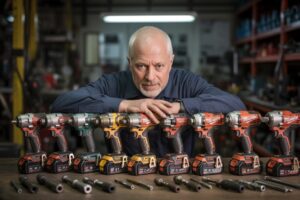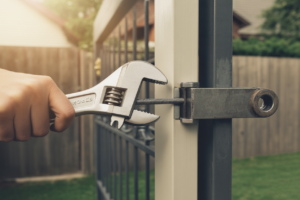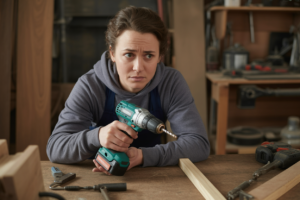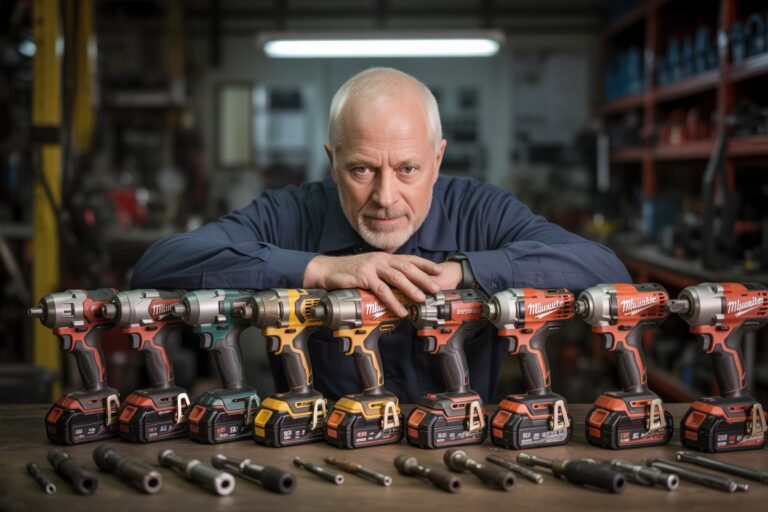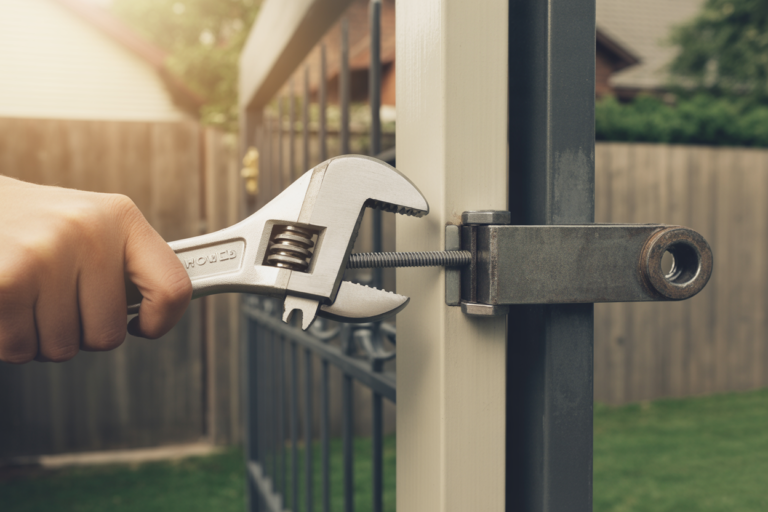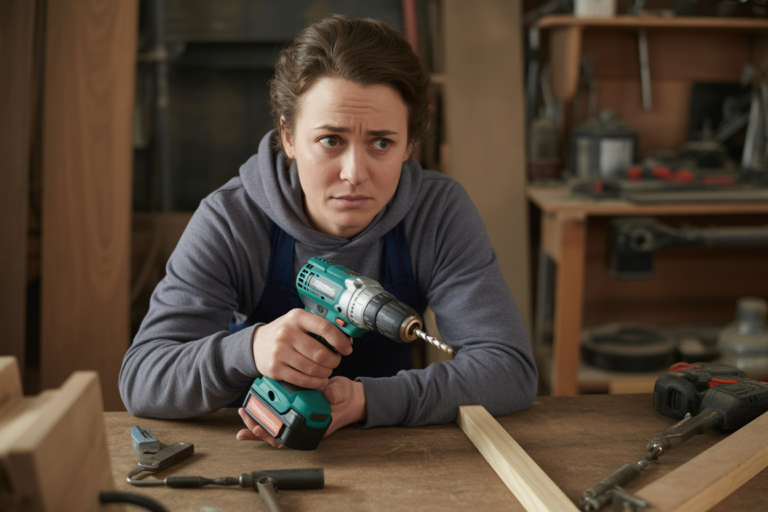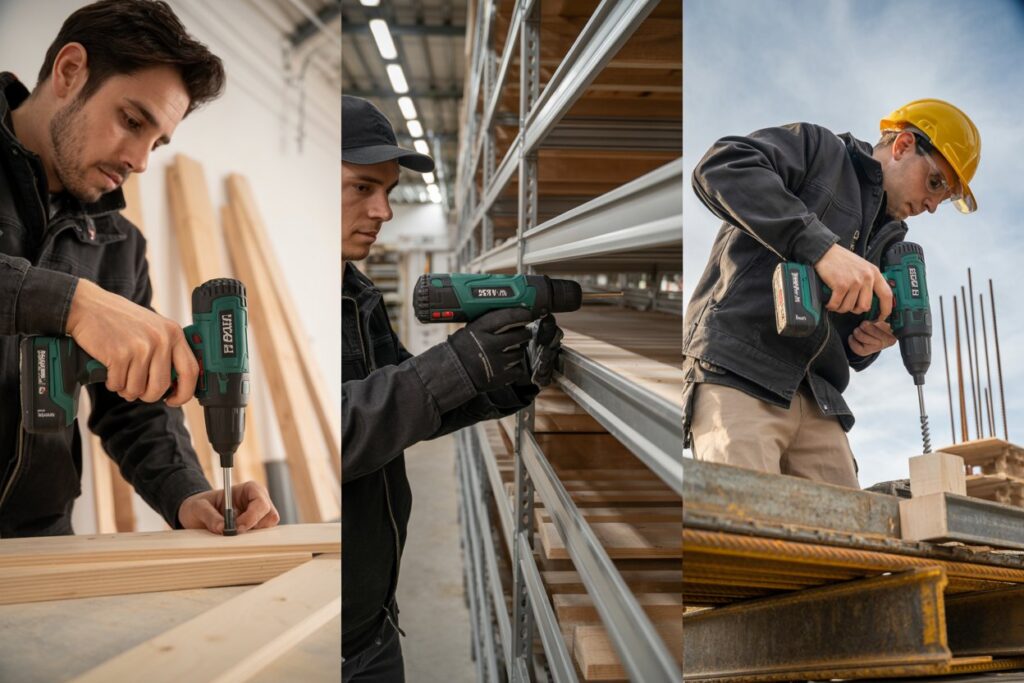
Choosing a cordless impact wrench1 can feel tricky—so many specs, models, and features. But don’t worry, I’ve been there too. Let’s break it down together so you can find the one that fits your work style, not just the numbers on the label.
A cordless impact wrench is a battery-powered tool designed to tighten or loosen nuts and bolts quickly using rotational force and percussive impacts. Choosing the right one means balancing power, control, and comfort based on your actual work needs.
When I first started working in power tools, I used to think “more torque2 equals better wrench.” But over time, I learned it’s really about balance—impact frequency3, torque2, and how the tool feels in your hand all work together. Here’s how I explain it to my customers now.
What Is a Cordless Impact Wrench?
A cordless impact wrench1 is like your best buddy when it comes to handling tough bolts—especially when cords get in the way.
A cordless impact wrench uses a rechargeable battery to deliver high torque through hammering action, making it ideal for automotive, construction, and industrial work without needing power cords.
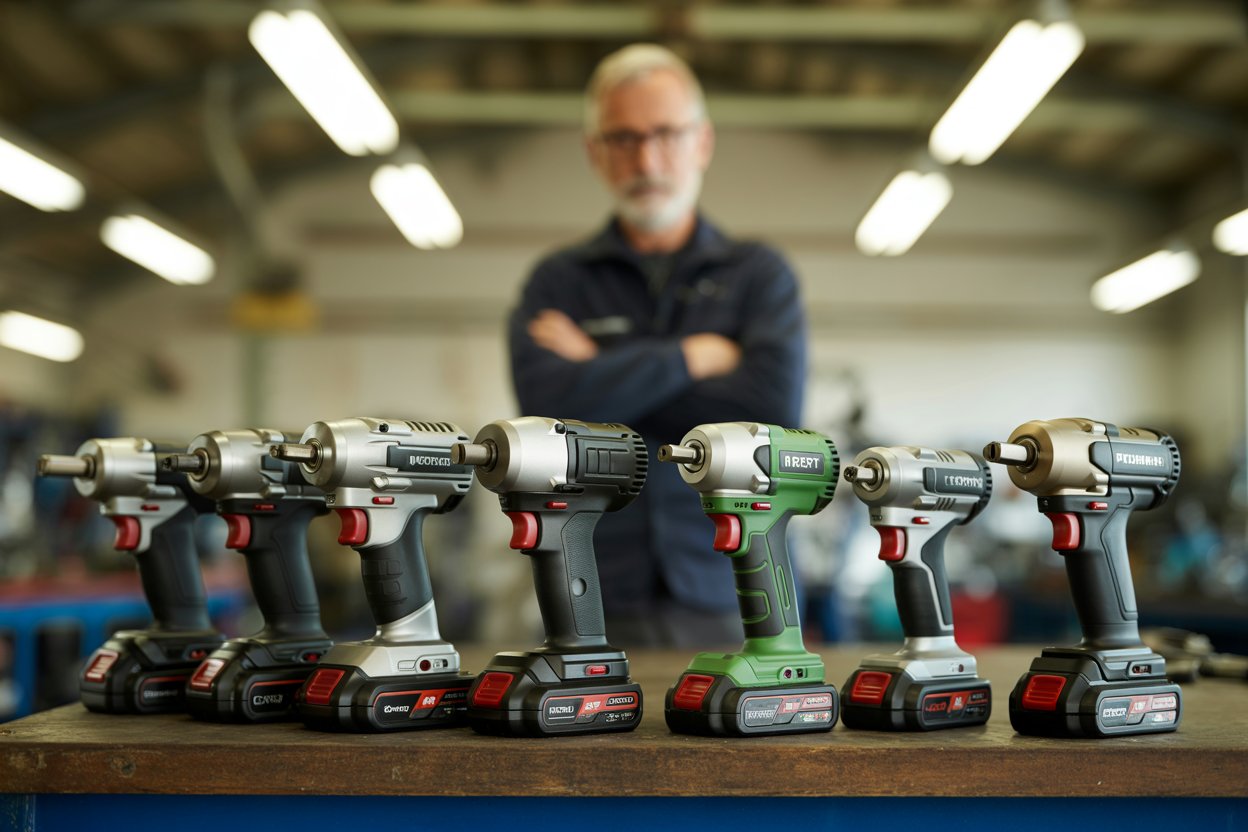
When I first picked up a cordless impact wrench1 on a factory floor years ago, I was amazed by how something so compact could pack such power. Inside, a small hammer mechanism strikes the anvil repeatedly, giving that “impact” force that loosens even the most stubborn bolts. Unlike drills, it’s not constant rotation—it’s controlled bursts of torque2.
Let’s compare a simple breakdown:
| Type | Power Source | Main Use |
|---|---|---|
| Corded Impact Wrench | Plug-in | Heavy-duty continuous use |
| Cordless Impact Wrench | Battery | Flexible, portable tasks |
| Pneumatic Impact Wrench | Air compressor | Industrial-level torque2 |
Cordless versions have come a long way—newer lithium batteries3 deliver impressive runtime and steady power. Plus, you’re not fighting with cables or air hoses. That freedom changes everything when you’re up on scaffolding or under a vehicle.
Why Impact Frequency Isn’t the Only Thing That Matters
People often focus too much on “impact frequency3”—how many blows per minute the wrench delivers. But that’s only half the story.
Impact frequency affects how fast the wrench delivers torque, but torque output, battery capacity, and ergonomics are equally critical for overall performance and comfort.
You can think of it like drumming—speed doesn’t mean strength. A wrench with a high BPM (blows per minute) might feel fast, but if it lacks torque2, it struggles with big bolts. I’ve tested models that sounded powerful but couldn’t remove a single rusted lug nut.
The secret? Look at the combination of torque2 (Nm or ft-lbs), impact frequency3, and RPM4.
For instance:
| Spec | Typical Range | What It Means |
|---|---|---|
| Torque | 100–1000 Nm | Power to tighten/loosen |
| Impact Frequency | 2000–3500 BPM | Speed of hammer blows |
| Speed (RPM4) | 0–2500 | How fast it spins |
If you often work with car tires, go for a balanced setup (around 3000 BPM, 400–600 Nm). For heavy-duty jobs like construction anchors, higher torque2 matters more than BPM.
Matching Impact Frequency to Different Applications
Each job has its own sweet spot. Matching your wrench to your work saves time and battery life.
Use low impact frequency for precision and control, and high impact frequency for repetitive, high-speed tasks such as automotive wheel work or assembly lines.
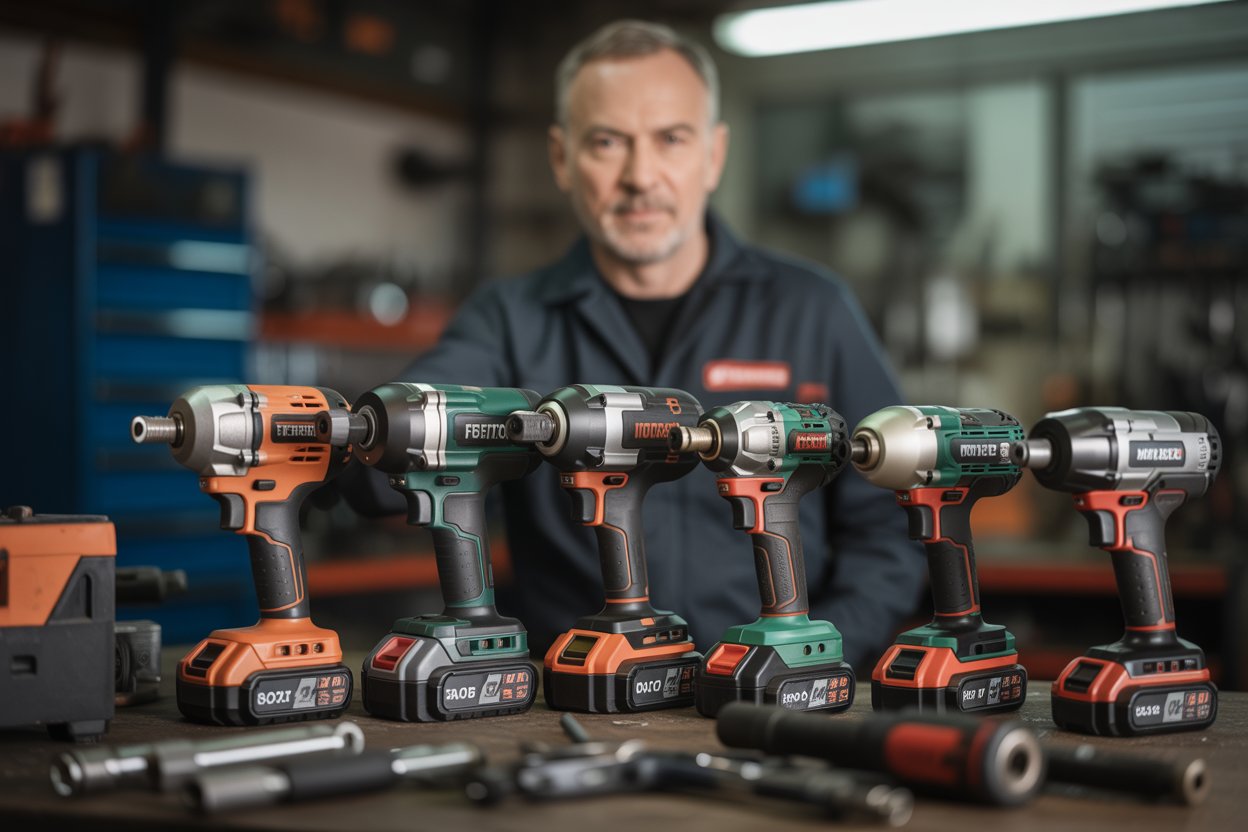
Let me tell you about a mistake I made early on—I once used a high-frequency wrench to assemble garden tools with small bolts. It was too aggressive; I ended up stripping threads. Lesson learned: sometimes less is more.
Here’s a quick guide I often share with my clients:
| Application | Recommended Torque | Ideal Impact Frequency |
|---|---|---|
| Furniture assembly | 100–200 Nm | 2500–3000 BPM |
| Auto repair | 400–600 Nm | 3000–3500 BPM |
| Heavy machinery | 800+ Nm | 2500–3200 BPM |
| Construction anchor bolts | 600–1000 Nm | 2500–3000 BPM |
Matching these values not only keeps your work efficient but also extends your tool’s lifespan. A mismatch (too much or too little impact) can wear parts faster or fail to tighten properly.
Tips for Choosing the Right Cordless Impact Wrench
Now that we’ve covered the tech side, let’s get practical—how do you pick one that truly works for you?
Choose a cordless impact wrench by evaluating torque range, battery capacity, weight, grip comfort, and available accessories. Always test balance and trigger response before purchasing.
When I help buyers—especially at trade fairs—I notice something: most grab the most powerful model first. But power without control is exhausting after hours of use. My advice is to pick the one that feels right. The tool should feel balanced, not front-heavy.
A few more insider tips:
- Check the battery system: Choose a platform that fits multiple tools (saves money long-term).
- Mind the weight5: Anything over 2.5 kg gets tiring fast during overhead work.
- Pay attention to certification: CE, RoHS, and ISO matter when you’re importing to Europe.
- Look for smart protection: Tools with overload protection6 last longer and are safer to use.
And yes—talk to your supplier about spare parts availability7. A wrench is only as reliable as the support behind it.
Conclusion
Choosing a cordless impact wrench1 isn’t about chasing numbers—it’s about finding the tool that fits your rhythm, your work, and your hands. Power and comfort should meet in the middle. Once you find that balance, every job feels smoother, faster, and just right.
Brand: YOUWE
Slogan: Power Tools Manufacturer
Website: www.professionalwrench.com
-
Explore this link to understand the mechanics and benefits of cordless impact wrenches. ↩ ↩ ↩ ↩
-
Learn about torque measurement to make informed decisions when selecting an impact wrench. ↩ ↩ ↩ ↩ ↩ ↩ ↩
-
Discover the significance of impact frequency and how it affects tool performance. ↩ ↩ ↩ ↩
-
Learn how RPM impacts the performance of impact wrenches for better tool selection. ↩ ↩
-
Understanding tool weight can help you choose a more comfortable and efficient option. ↩
-
Discover how overload protection enhances safety and longevity of power tools. ↩
-
Learn why having access to spare parts is crucial for maintaining your tools. ↩

